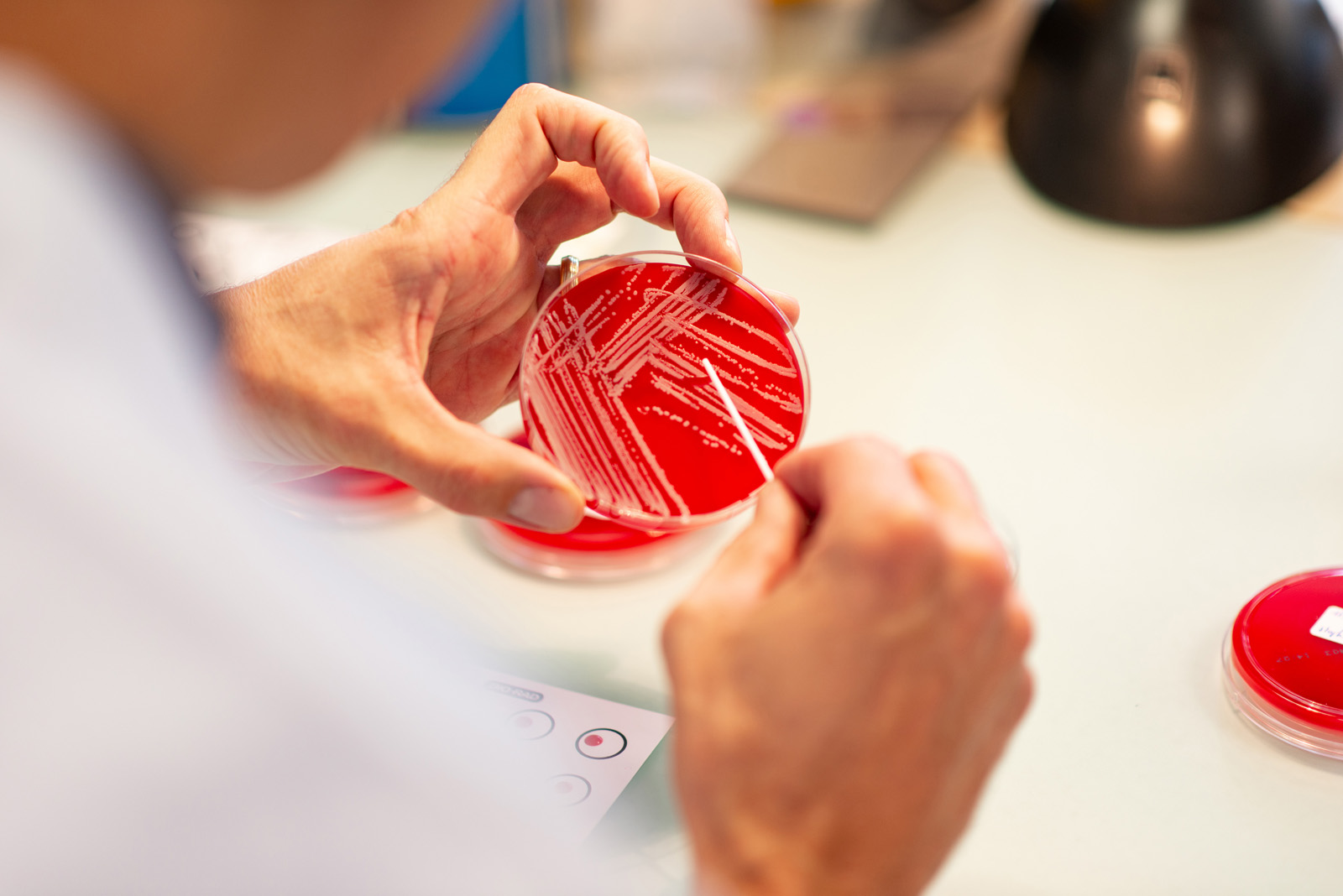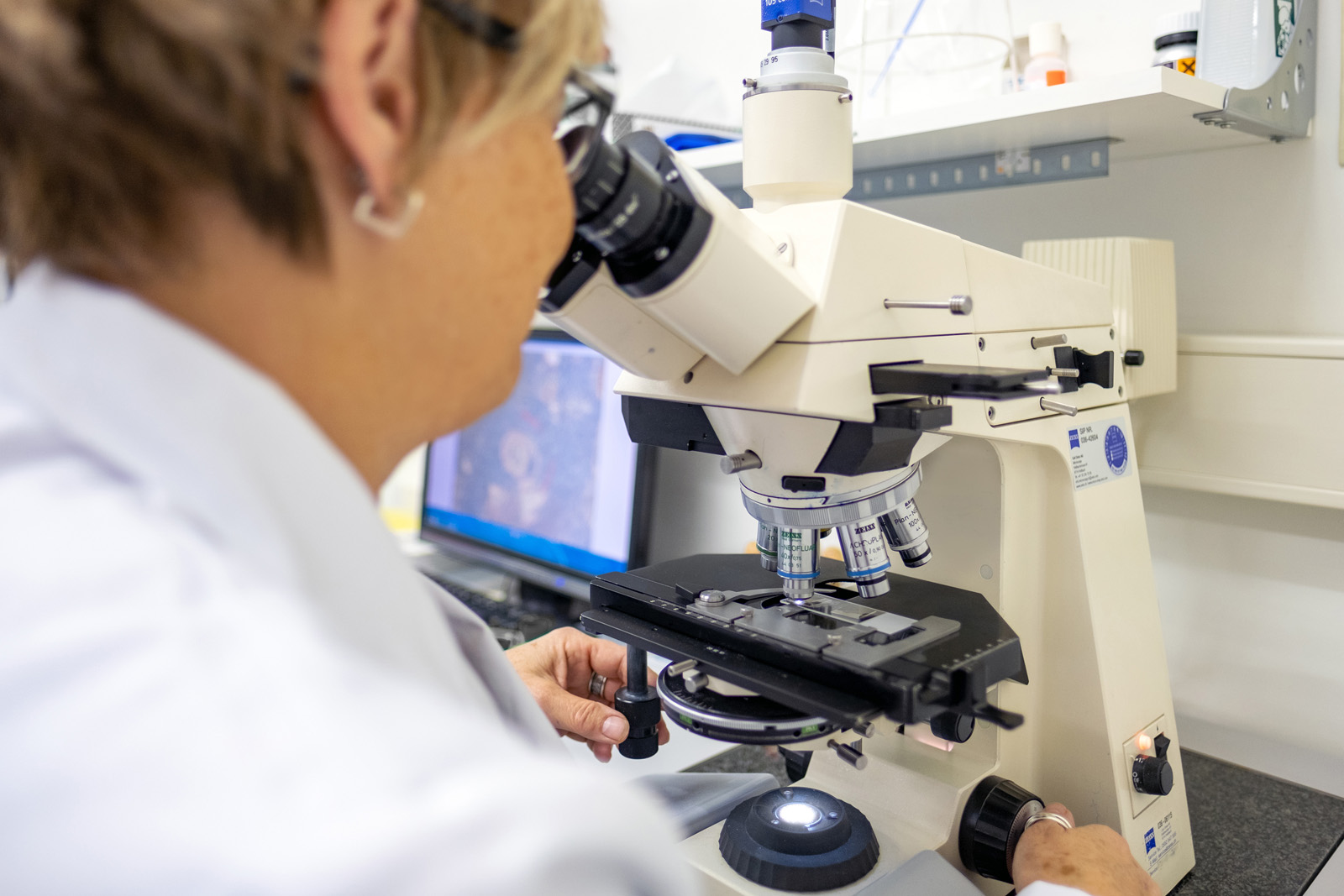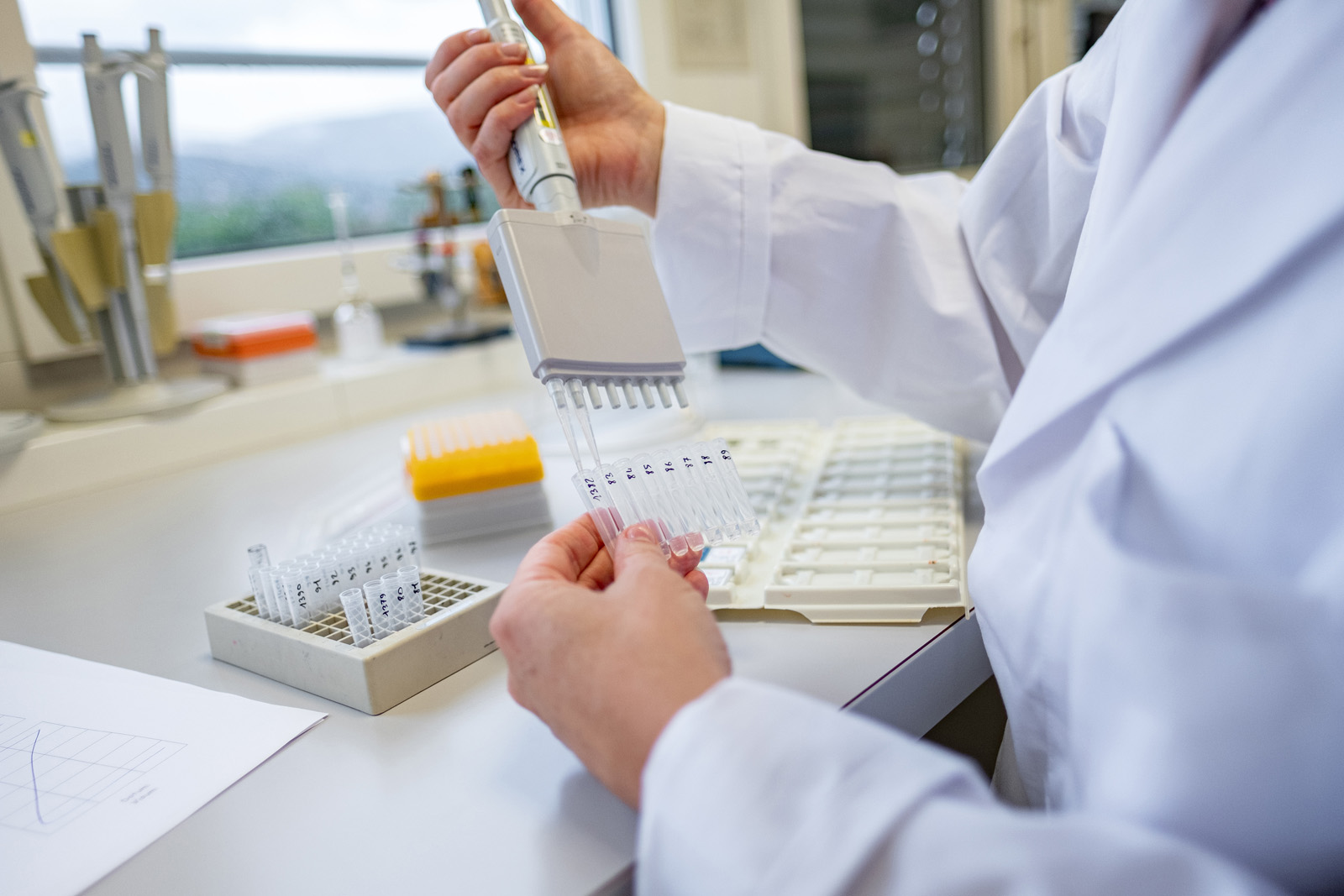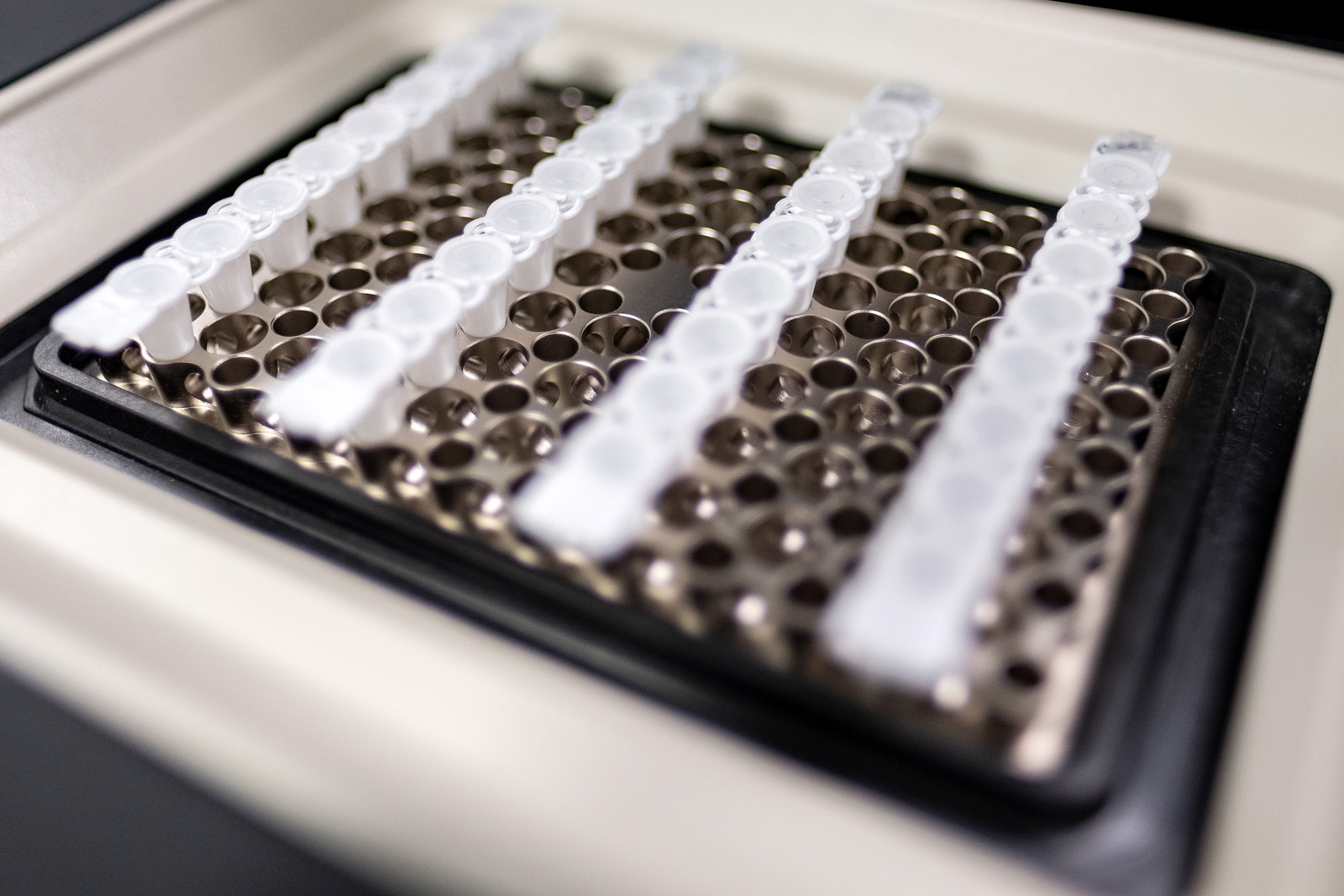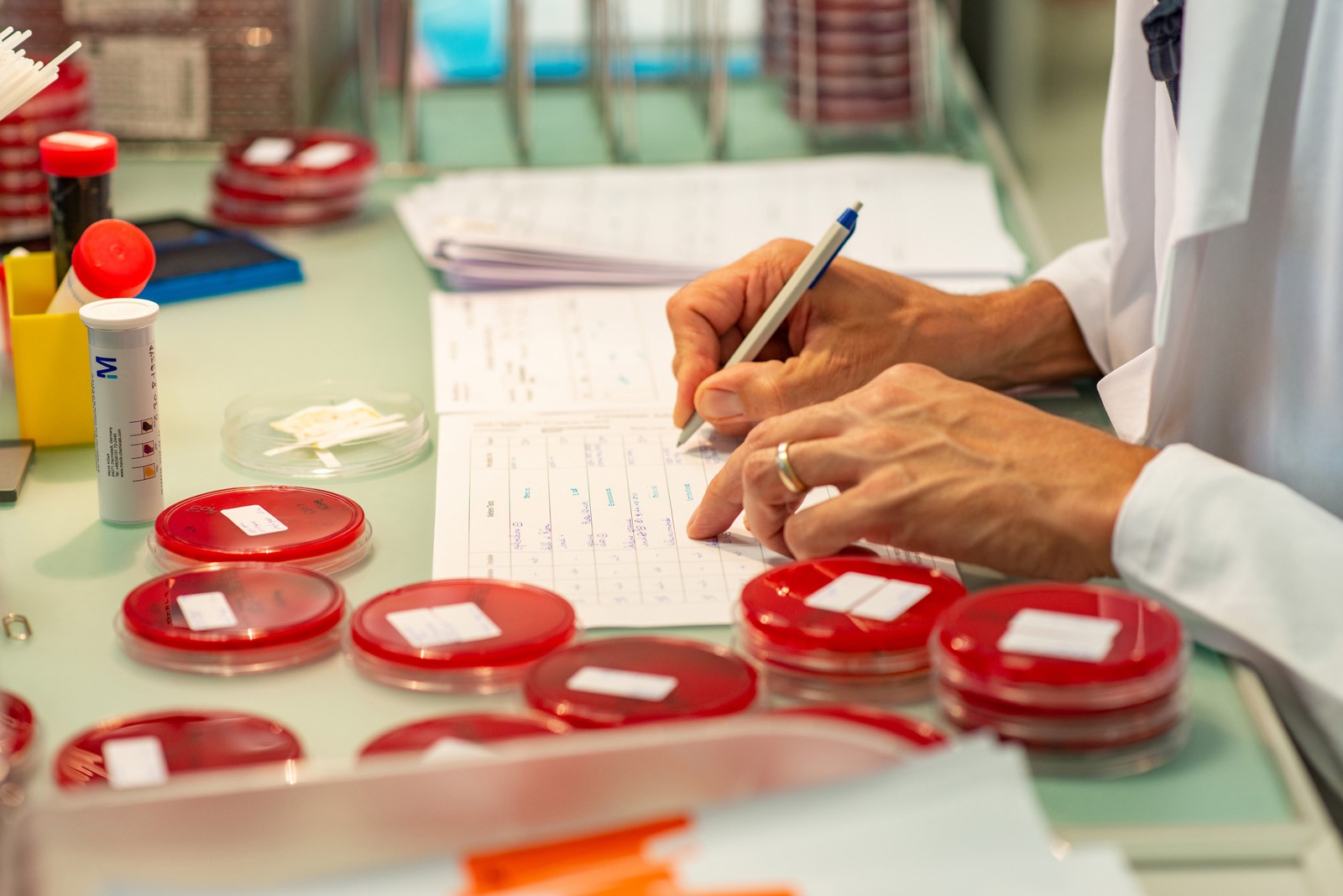Knowledge
Diagnostic Techniques
Bacteriological and mycological methods
The standard method for determination of bacteria is the bacterial culture technique. Different culture media (plates or broths) are used for differentiation of bacteria.
Smears of organs or tissues, swabs, feces, urine, secretions and other materials may be examined with this technique.
Culture media are incubated under defined conditions (temperature, time, aerob, anaerob, microaerophil etc.). The grown colonies are analyzed and may be separated for development of pure cultures.
Differentiation follows microbiological standard methods using special media, biochemical tests or other special techniques (e.g. MALDI-TOFF).
For determination of fungi, special culture media are used and the grown fungi differentiated under light microscope.
The advantage of these classical methods is that all microbial organisms are potentially growing and, therefore, can be detected. They can also be further differentiated and identified.
For microorganisms that are known to grow with difficulty on artificial culture media, serological tests or molecular biological methods are available.
Standard parasitological techniques
Different methods are available depending on the species, occurrence and developmental state of parasites.
Ectoparasites
Fur sample / swab
A sample is taken from the fur of the neck / back and the abdominal region of the animal. The fur sample can either be examined on a slide directly under a light microscope or analyzed molecularbiologically.
Endoparasites
Microscopic examination of wet mounts
Fresh feces or samples directly from the intestines are placed on slides and examined microscopically for endoparasites, such as protozoa.
Helminths
During necropsy, helminths (adult or larvae) can be detected directly in the gastrointestinal or urinary tract.
Perianal tape test
A sample from the perianal region is taken with a piece of Scotch tape, placed on a slide and examined microscopically for pinworm eggs (Syphacia spp). The eggs are excreted periodically which should be taken into account for the sampling procedure.
Flotation
Fecal samples are mixed with flotation medium and prepared for examination under light microscope according to protocol. Eggs of nematodes, trematodes or coccidia can be detected with this method.
Concentration technique
Depending on the type of parasites, several methods comprising a step of concentration of the sample material before microscopic analysis are available, such as Parasep, SAF, Baerman technique.
Serological techniques
The interaction of an organism (human, animal) with microorganisms causes the production of specific antibodies against this pathogen. These antibodies usually circulate in the blood system and can be detected in blood samples.
The serological test can detect specific antibodies and is an indirect method for the determination of pathogens like viruses, batceria or parasites.
The standard methods used are ELISA (enzyme-linked immunosorbent assay) and the indirect immune fluorescence assay.
For interpretation of serological test results it is important to know that, depending on the pathogene, different time intervals may exist before seroconversion, and that serological results can be questionable in animals that are too young or immunocompromised.
Molecular biological techniques
Molecular biological methods, such as polymerase chain reaction (PCR), are used for direct detection of pathogens. The molecular biological method can be used in addition to all above-mentioned techniques.
Depending on the type of pathogen and its characteristics, the possible time interval for successful detection is different. The advantage of this method is its relatively high specificity and sensitivity, so that also very low concentrations of pathogens can be detected. On the other hand, this technique can detect only what we are actively looking for in contrast to classical bacteriology, for example.
Conventional PCR
This technique uses the combination of amplification of the pathogen DNA- or RNA- sequences followed by agarose gel electrophoresis for visualization.
Real-Time PCR
The determination of pathogen-specific DNA- or RNA- sequences can be performed alternatively via Real-Time PCR. With this technique, the result is graphically visualized in «real» time and besides qualitative also a quantitative evaluation is possible.
Feed analysis
The quality and hygienic conditions of feed are important factors for the health of animals.
Minimum hygienic requirements for feed are defined by law. Depending on the use and housing conditions of the animals, further requirements may apply. For orientation, the German Society of Laboratory Animal Science (GV-SOLAS) has published recommendations for the quality of laboratory animal feed («Leitlinien für die Qualitätsgesicherte Herstellung von Versuchstierfutter»; Ausschuss für Ernährung, August 2001).
Based on this, the following feed analyses are provided by MicroBioS:
1. Total plate count (aerob)
2. Enterobacteriaceae
3. Escherichia coli
4. Yeasts and moulds
5. Salmonella spp.
6. Clostridium perfringens
Water analysis
In general, there are high requirements regarding the quality of drinking water to ensure that no pathogens or undesirable microorganisms exist in the water.
Furthermore, in lab animal facilities, water analysis may be performed to check the effectiveness and cleanliness of bottle washing and filling machines, which can also be done by microbiological analysis for pathogens in the water.
The following water analyses are provided by MicroBioS:
1. Total plate count (aerob bacteria)
2. Pseudomonas spp. and Pseudomonas aeruginosa
3. Enterobacteriaceae and Escherichia coli
4. Staphylococcus aureus
5. Yeasts and moulds
Info Flyer
Links
MicroBioS AG
Lörracherstrasse 50
CH-4125 Riehen
Management
Dr. med. vet. Sandra Bäckert
Dr. med. vet. Christina Simon
Veterinary Specialist in Laboratory Animal Science
